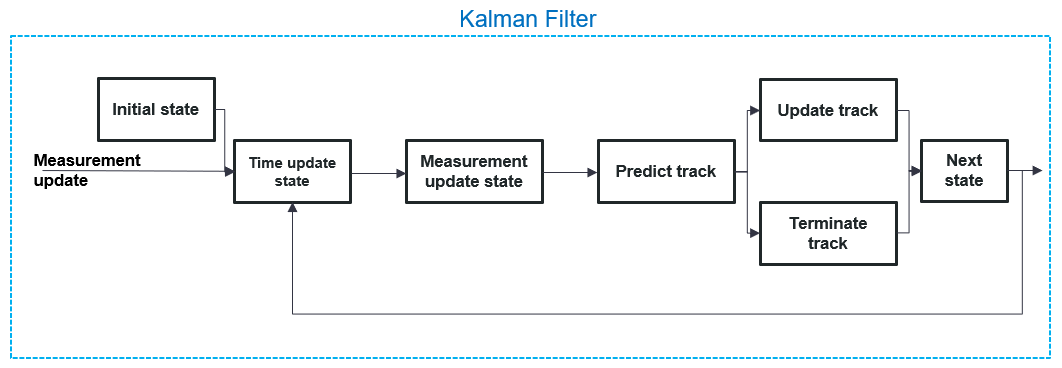FreeScopes ATC II empowers the students to assemble new complex blocks on their own. Also they are equipped with statistical algorithms like the interactive Multiple Model or the Kalman filter.

The clutter map records the initial radar image. It can be used in many subsequent algorithm to detect changes to the initial state (e.g., one or several targets)
The signal delay block is required in many composite applications where we need to compare the actual sweep with a previous sweep (n+1, n+2, n+3). The correct academic name is "delay line canceller".
The Doppler Filter is implemented as an MTI block with post processing and subsequent phase shift detection of two consecutive pulses.
Two consecutive pulses which have a Doppler-frequency will not have a regular/expected phase shift in comparison with two consecutive pulses of stationary targets
The zero velocity filter filters out only targets which are not moving. The filter is needed in many applications like MTD.
The subtraction and sum feature allow to add or subtract several signals. This is needed in many composite filters.
One of the most powerful statistical estimation techniques, which is widely applied in navigation, radar tracking, jamming defense, satellite orbit determination, autonomous driving, and many other fields is the Kalman filter. This digital filter provides a quite accurate estimation of the next state (position, movement, temperature, etc.) from any possible noisy input signal, in real time, which makes it very suitable for radar navigation and tracking purposes.
For the tracking feature in ATC II, we make use of the Kalman filter principle, to estimate the detected moving targets. In the following figure, the block diagram of the tracking feature is shown.
The tracking feature of ATC II consist of four steps:
The interacting multiple model (iMM) filter is a sophisticated and compiste algorithm for object tracking.
The main difference between the linear Kalman filter, is the extension of object prediction and correction of the object positions also on the lateral positions.
The linear Kalman filter is mainly taking as track updates the longitudinal object positions, where with the iMM also the track updates on the lateral positions are considered, and in this way more robustness on object tracking is added.
SkyRadar's base unit is a close range training and research radar for indoor and outdoor experiments.
At the leading edge of security provision within its key markets, Cryptomathic closely supports its global customer base with many multinationals as longstanding clients.
SkyRadar develops innovative radar training solutions and simulation systems, empowering education, research & professional training in aviation and defense sectors.
All rights reserved by SkyRadar 2008 - 2025


SkyRadar Consortium
Email: sales@SkyRadar.com | Website: www.SkyRadar.com | © [2025] SkyRadar